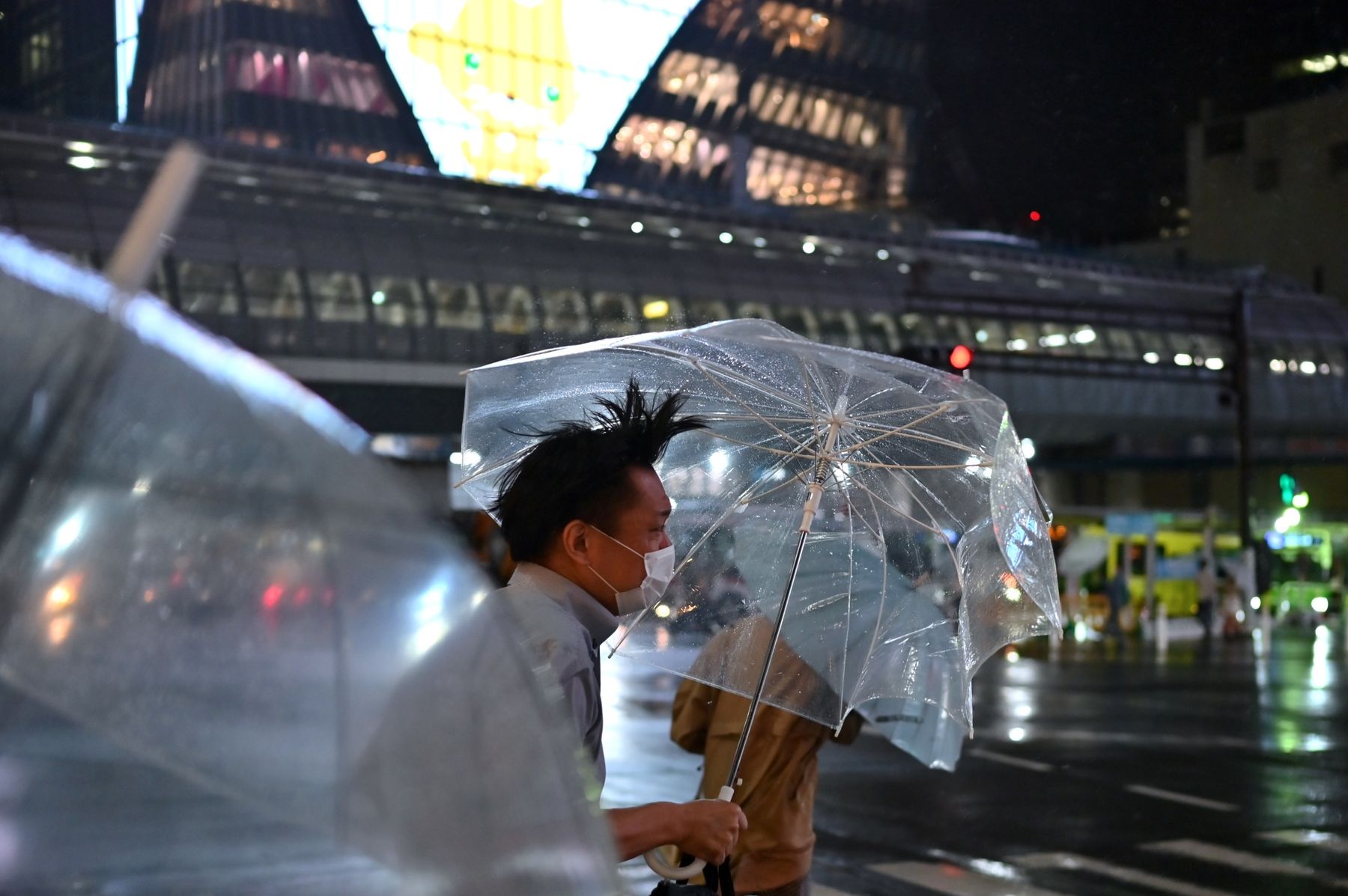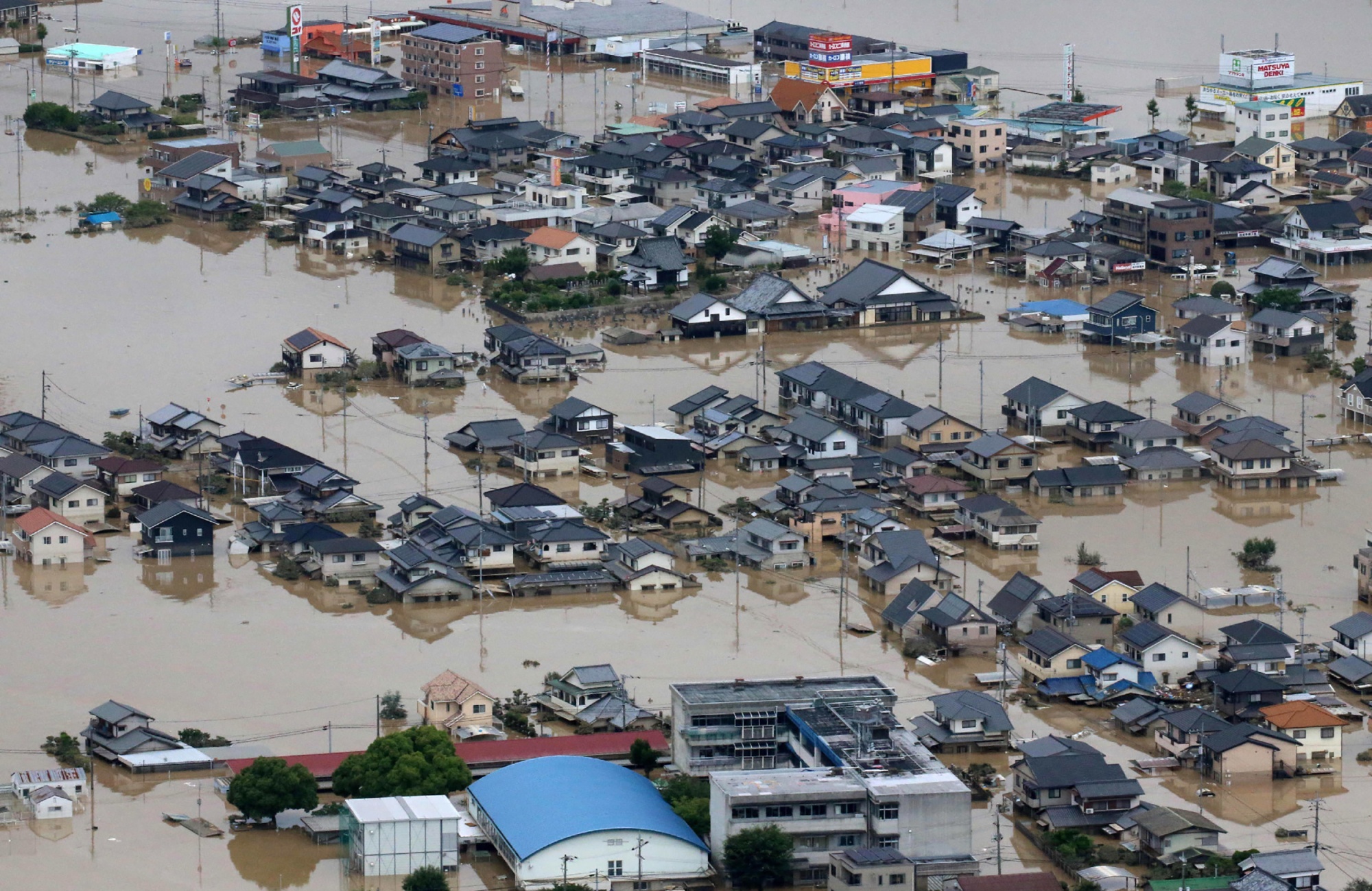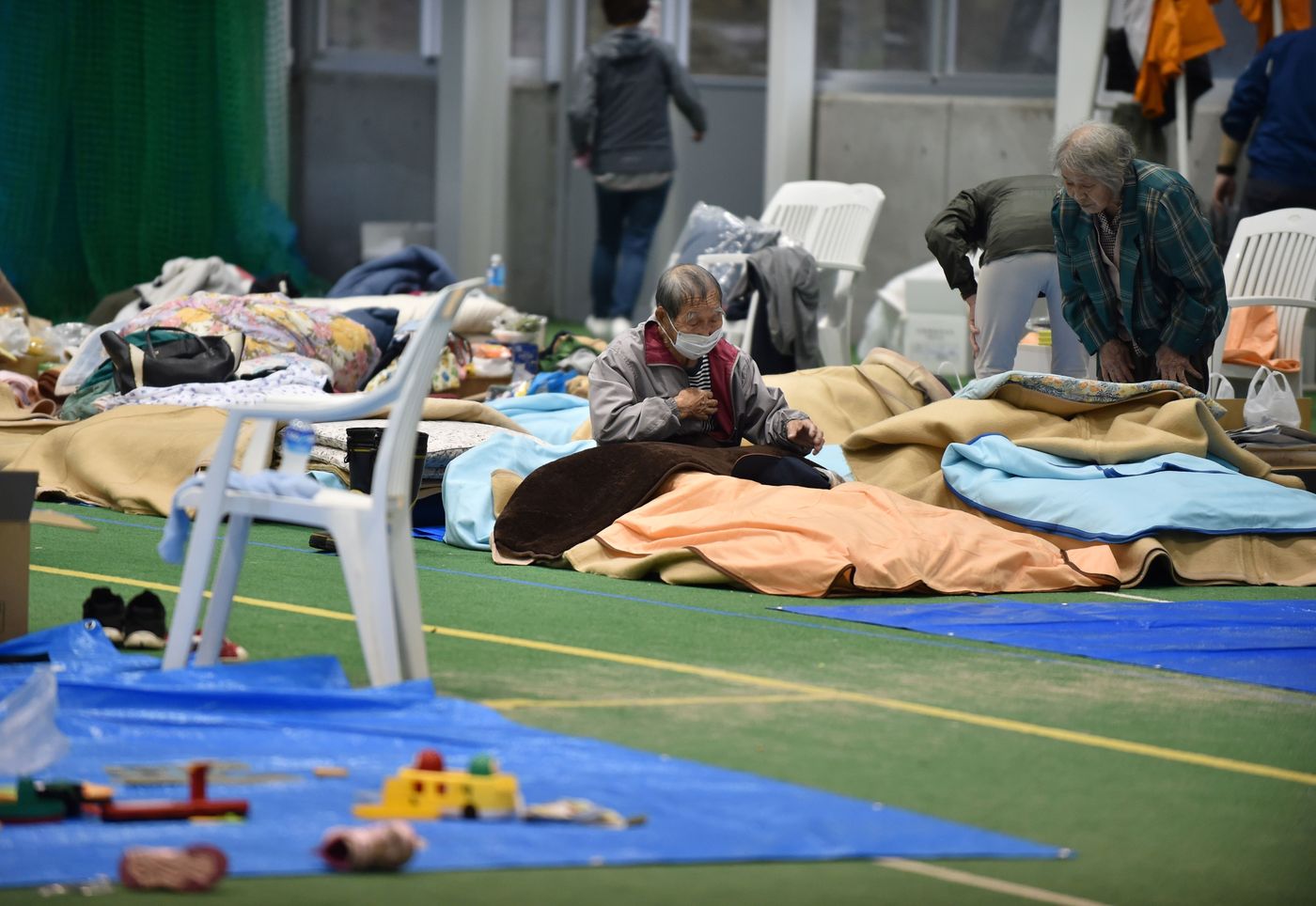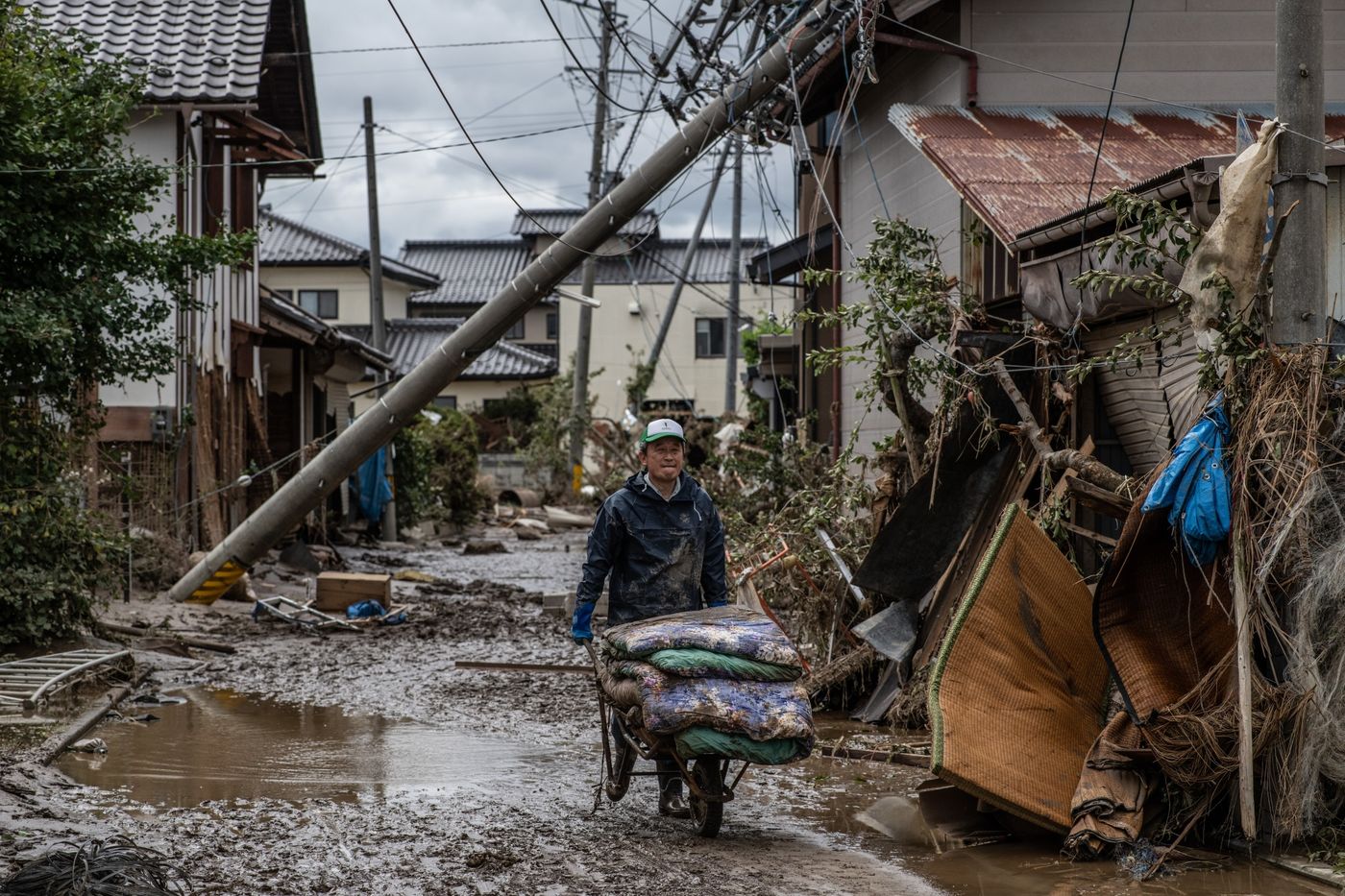
Japan natural disaster evacuation plans need an overhaul as the country heads into its rainy season, experts warned, saying crowded conditions could spark coronavirus clusters that grow into another wave of infections.
The period of heavy precipitation, which typically triggers floods and landslides -- often forcing hundreds of people to take shelter together in gymnasiums -- has already settled in in some parts of Japan. Failure to prepare risks reigniting the disease, just as cases decline across most of the country and Prime Minister Shinzo Abe seeks to remove more restrictions and help the ailing economy.
“If a lot of people gather in a small evacuation center and somebody is infected, a cluster will occur and the infection will spread,” said Ichiro Matsuo, an associate professor at the University of Tokyo center for integrated disaster information research.
Matsuo compared conditions in shelters to those aboard the USS Theodore Roosevelt aircraft carrier, where the virus quickly spread to more than a quarter of the crew. Singapore’s foreign worker dorms have posed a similar problem, representing more than 90% of the Southeast Asian city-state’s confirmed coronavirus cases.
Japan was the country most affected by extreme weather events in 2018, according to Germanwatch, a non-profit organization that tracks global climate risks. The rainy season, which generally ends in mid-July, is followed by typhoons, which have become more damaging and unpredictable as the climate changes. Earthquake evacuees often need to shelter away from home for long periods, worsening the health risks.
Japan’s usual approach to housing people displaced by disasters in primary school gyms leaves little room for social-distancing, with 200-300 people crammed into an area with inadequate ventilation and limited access to toilets. Each person is allotted space for one straw “tatami” mat, leaving about 1.6 square meters (17 square feet) for each, according to Matsuo.

Disaster management minister Ryota Takeda told parliament last week that funds have been freed up for local governments to stockpile supplies for the compounded threat. Officials must also get the message to residents that they need to make their own preparations, Matsuo said.
Some local governments are pressing ahead with planning for a potential “double disaster” where the coronavirus adds to seasonal problems. Among them is the city of Takahashi in Okayama Prefecture, about 550 kilometers (340 miles) west of Tokyo, one of the worst-hit by summer flooding two years ago.
Officials wearing plastic face shields and masks held a drill this month to rehearse new evacuation procedures meant to apply amid the pandemic. That included taking temperatures at the building entrances, and separating the healthy from those suspected of being infected.
“The best way is to make sure that people who are unwell don’t cross paths with others,” said Yuichi Ishida, one official running the exercise. “But you can’t conduct a triage outdoors in torrential rain.”

Marking out spaces to keep households two meters (6 feet) apart means each center can accommodate fewer evacuees. Officials are trying to identify additional shelter sites, from government facilities to hotels and inns, with mixed success. Driving to a safer area and camping out in a car is a plan that can only be risked in regions with little road traffic and can present problems of its own.
The answer is for individuals to understand the risks and shoulder more of the responsibility for their own safety, according to Masako Yoneda of the Japan Academic Network for Disaster Reduction, which issued an emergency message on the topic last month.
“The biggest issue is to identify somewhere other than the evacuation center where you can take shelter,” she said, advising residents to study hazard maps and make an agreement to stay with friends or relatives in safer areas ahead of time. “It’s not good enough just to think about it. Speak to them, and get permission,” she added.

Even so, experts say people in disaster zones shouldn’t hesitate to head to evacuation centers if their home is at risk and there are no other options.
“You have to take responsibility for yourself and take shelter in a way that reduces the risk of infection,” Matsuo said. “Everybody has a role to play in the pandemic. People need to prepare more than ever before.”
— With assistance by Emi Nobuhiro